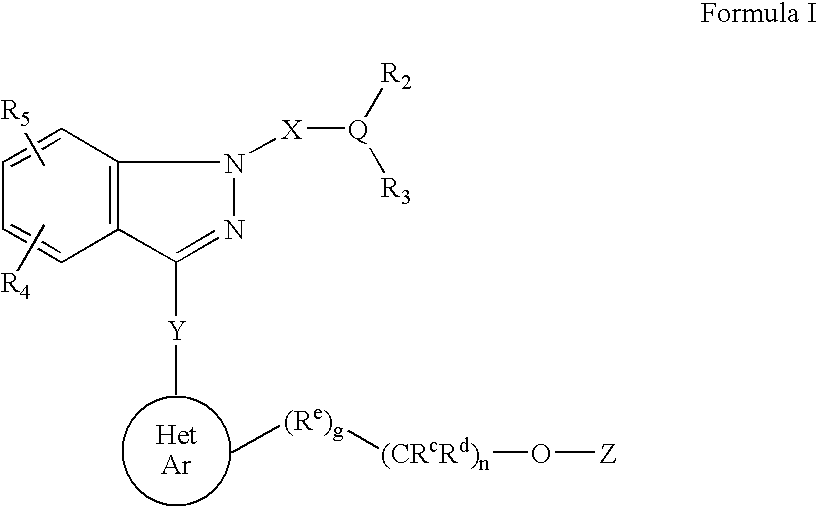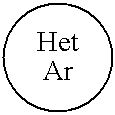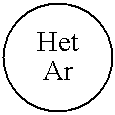Ophthalmic compositions for treating ocular hypertension
a technology of ocular hypertension and compositions, applied in the field of ophthalmic compositions for treating ocular hypertension, can solve the problems of unsatisfactory side effects, unsatisfactory efficacy and unsatisfactory side effects of these agents, and irreversible loss of visual function
- Summary
- Abstract
- Description
- Claims
- Application Information
AI Technical Summary
Problems solved by technology
Method used
Image
Examples
example 1
[0150]
Step A:
[0151]
[0152]To a solution of Intermediate 6 (600 mg g, 2.08 mmol) and Cs2CO3 (2.028 g, 6.24 mmol) in DMF (14 mL) was added Intermediate 2 (809 mg, 3.24 mmol). After 35 min the reaction was complete and poured into ice water. The solid precipitate was collected to yield 950 mg of the desired product (quantitative).
[0153]1H NMR (CDCl3) δ: 0.919 (3H, t), 0.975 (3H, t), 1.327 (4H, m), 1.596 (4H, m), 3.408 (4H, m), 3.926 (3H, s), 5.275 (2H, s), 6.864 (1H, s), 7.053 (1H, d), 7.491 (1H, d), 8.321 (1H, d), 8.563 (1H, d), 9.425 (1H, d).
Step B:
[0154]
[0155]800 mg (20.0 mmol) of NaH (60% dispersion in mineral oil) was washed 3× with hexane and dried under nitrogen. Ethylene glycol (14 mL) was added to the dry NaH and the reaction stirred for 20 min at 50° C. To the reaction mixture was added the intermediate from the previous step (916 mg, 2.0 mmol) as a solution in THF (12 mL). The reaction was stirred over night at 50° C. The reaction mixture was poured into ice water and the sol...
example 2
[0157]
[0158]To a solution of the intermediate from Example 1, Step B (438 mg, 0.908 mmol) in CHCl3 (10 mL) was added tetrazole (3.02 mL, 1.362 mmol, 0.45 M / CH3CN) and di-tert-butyl diethylphosphoramidite (0.302 mL, 1.09 mmol) at RT. After 0.5 h the reaction was complete and peracetic acid (0.227 mL, 1.816 mmol) was added at 0° C. for 0.5 h. The reaction mixture was quenched with saturated sodium bisulfite, diluted with EtOAc, washed with saturated sodium bicarbonate, H2O, and saturated NaCl, dried over MgSO4, and evaporated to dryness in vacuo. The crude residue was chromatographed on SiO2 to yield 398 mg of pure product. To the phosphate ester dissolved in EtOAc was bubbled 99% HCl (g) at 0° C. until saturation. The solid precipitate was collected to yield 170 mg of the final product. Further recrystallization of the mother liquor from MeOH / tOAc / hexane yielded 140 mg more of the final product. 310 mg collected (82% yield).
[0159]1H NMR (CD3OD) δ: 0.922 (3H, t), 1.004 (3H, t), 1.312 ...
example 3
[0160]
Step A:
[0161]
[0162]This compound was prepared as described in Step A of Example 1 but Intermediate 3 was used in place of Intermediate 2.
[0163]1H NMR (CDCl3) δ: 0.832 (3H, t), 0.992 (3H, t), 1.667 (4H, m), 3.384 (4H, m), 3.866 (3H, s), 5.218 (2H, s), 6.777 (1H, s), 6.937 (1H, d), 7.365 (1H, m), 8.178 (1H, d), 8.495 (1H, d), 9.377 (1H, s).
Step B:
[0164]
[0165]This compound was prepared as described in Step B of Example 1. Purified via SiO2 preparatory plate (1:2 hexane / EtOAc).
[0166]1H NMR (CDCl3) δ: 0.843 (3H, t), 0.975 (3H, t), 1.619 (4H, m), 3.400 (4H, m), 3.917 (3H, s), 4.010 (2H, m), 4.109 (2H, m), 5.291 (2H, s), 6.858 (1H, s), 6.927 (1H, d), 7.046 (1H, d), 8.318 (1H, d), 8.569 (1H, d), 9.330 (1H, s).
PUM
| Property | Measurement | Unit |
|---|---|---|
| pH | aaaaa | aaaaa |
| hyperpolarized membrane potential | aaaaa | aaaaa |
| pH | aaaaa | aaaaa |
Abstract
Description
Claims
Application Information
 Login to View More
Login to View More - R&D
- Intellectual Property
- Life Sciences
- Materials
- Tech Scout
- Unparalleled Data Quality
- Higher Quality Content
- 60% Fewer Hallucinations
Browse by: Latest US Patents, China's latest patents, Technical Efficacy Thesaurus, Application Domain, Technology Topic, Popular Technical Reports.
© 2025 PatSnap. All rights reserved.Legal|Privacy policy|Modern Slavery Act Transparency Statement|Sitemap|About US| Contact US: help@patsnap.com



